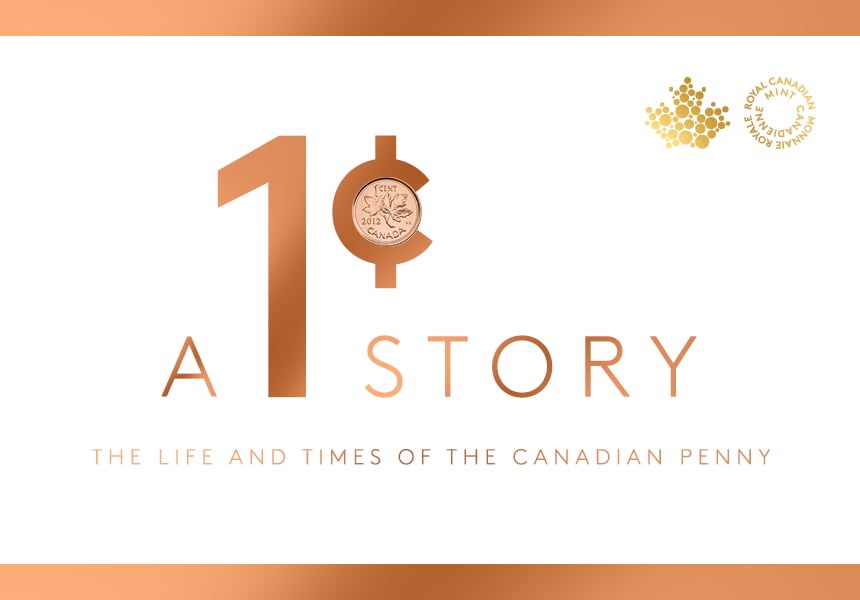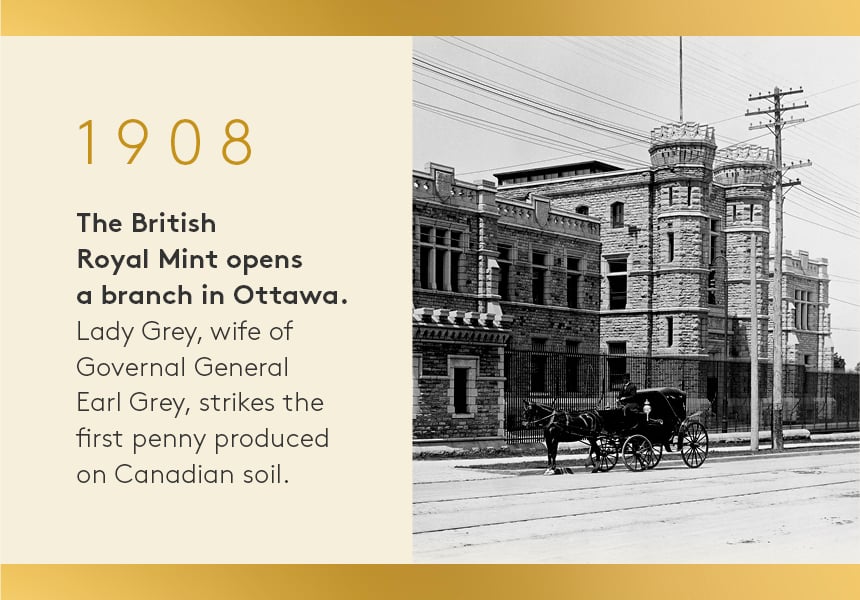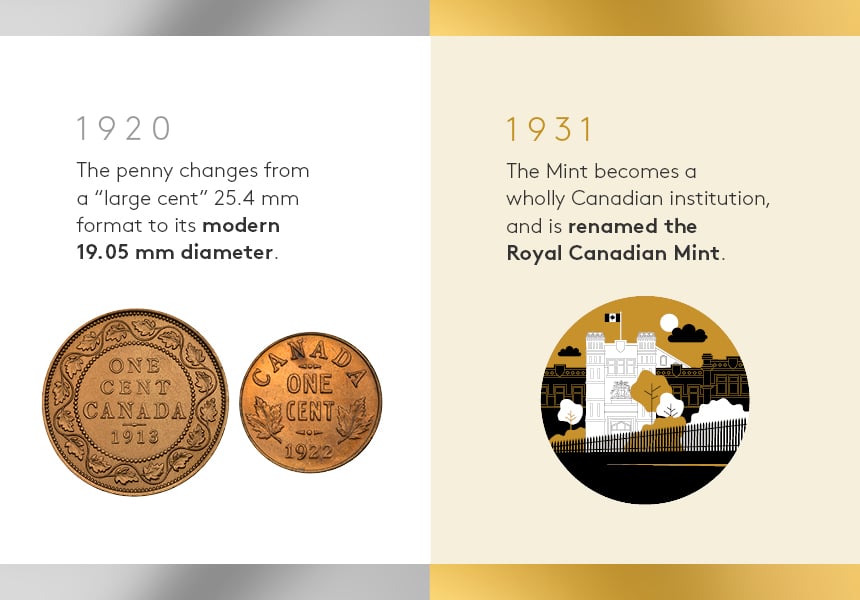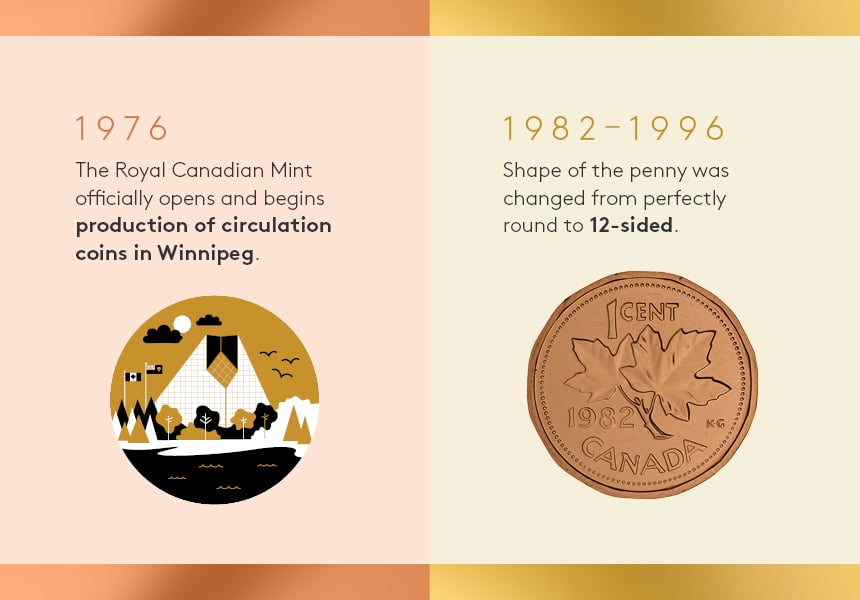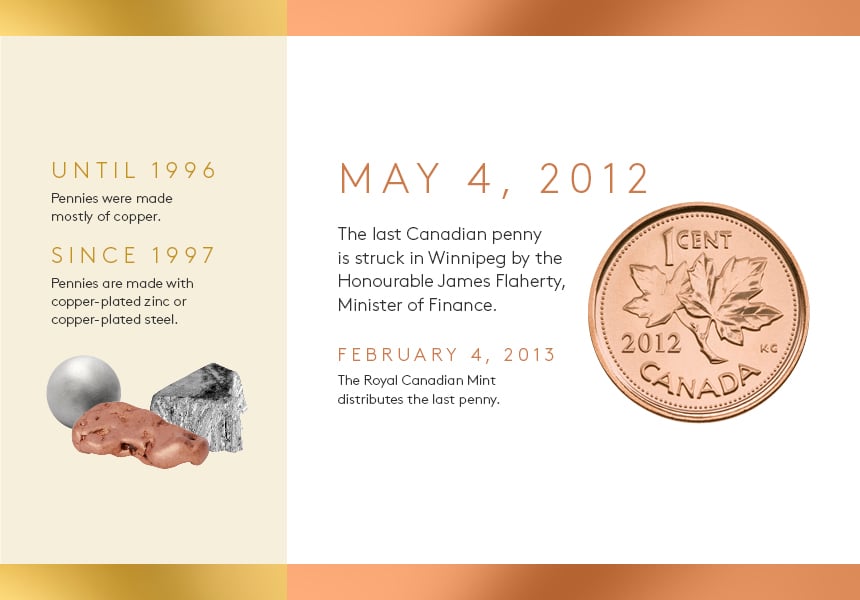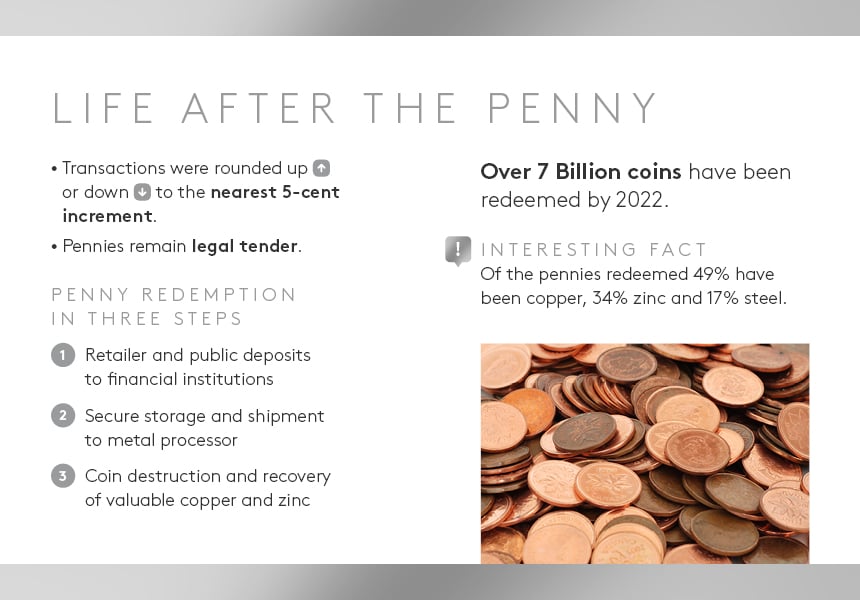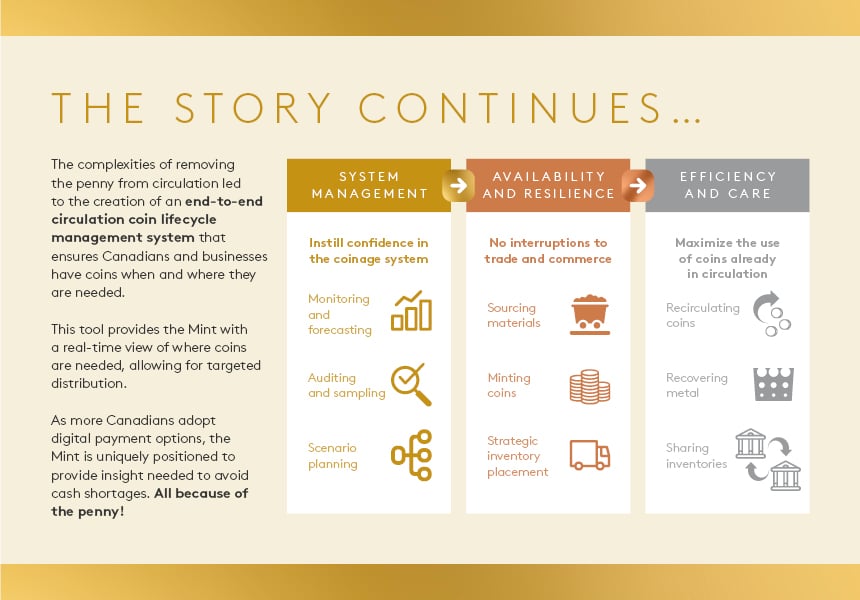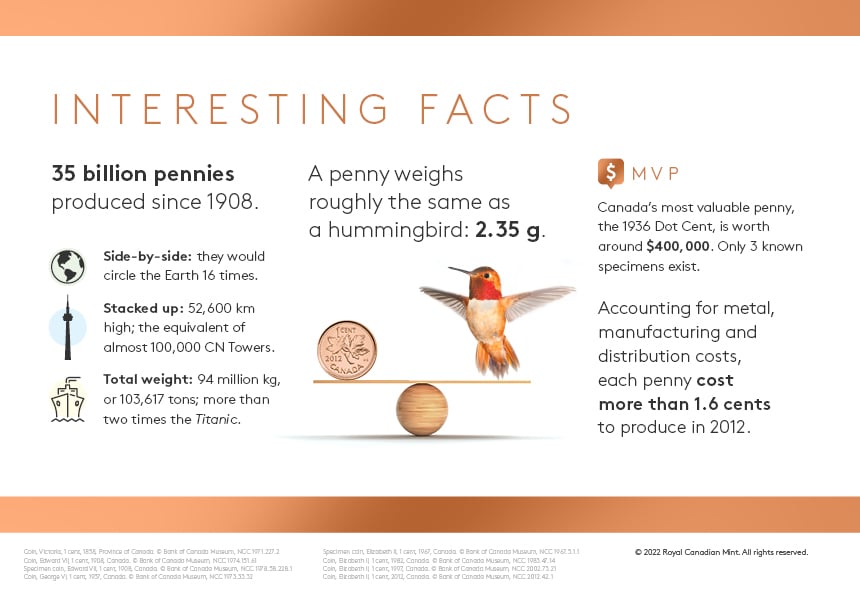Ten Years After: The Legacy of the Penny
- Jun 16, 2022
- Learn
- 3 minute read
When the late Jim Flaherty, Minister of Finance, activated the Winnipeg coining press that struck Canada’s last penny on May 4, 2012, a door seemed to permanently close on a piece of Mint history. In fact, the ceremony that bid farewell to the penny ushered in a 10-year whirlwind of change that has given us a robust and resilient coin management system that is the envy of the world.
In total, 35 billion pennies were produced since we first opened our doors in 1908. Side-by-side, all those coins could circle the earth 16 times. In 2012, following the announcement of the penny’s removal from circulation, an estimated 6 billion 1-cent coins were in circulation. As Canada’s mint, we do more than just make coins, we also manage the demand and distribution of coinage across the country. While we no longer had to produce the penny, our work was far from over.
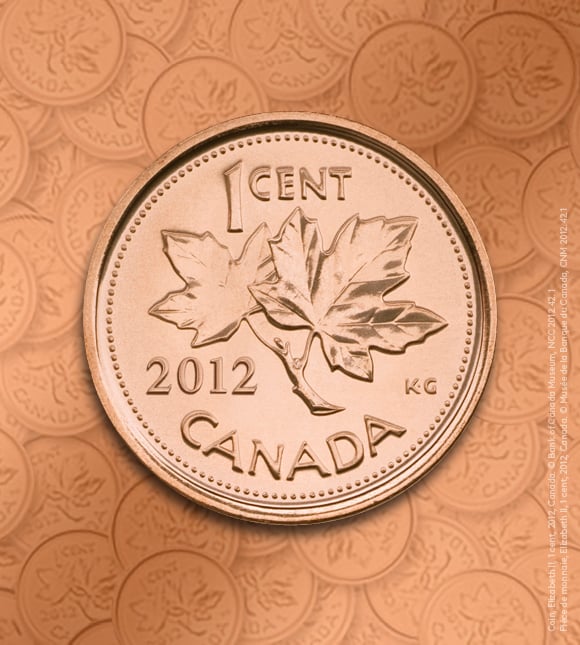

The last Canadian penny. Struck in Winnipeg on May 4, 2012.
When the late Jim Flaherty, Minister of Finance, activated the Winnipeg coining press that struck Canada’s last penny on May 4, 2012, a door seemed to permanently close on a piece of Mint history. In fact, the ceremony that bid farewell to the penny ushered in a 10-year whirlwind of change that has given us a robust and resilient coin management system that is the envy of the world.
In total, 35 billion pennies were produced since we first opened our doors in 1908. Side-by-side, all those coins could circle the earth 16 times. In 2012, following the announcement of the penny’s removal from circulation, an estimated 6 billion 1-cent coins were in circulation. As Canada’s mint, we do more than just make coins, we also manage the demand and distribution of coinage across the country. While we no longer had to produce the penny, our work was far from over.
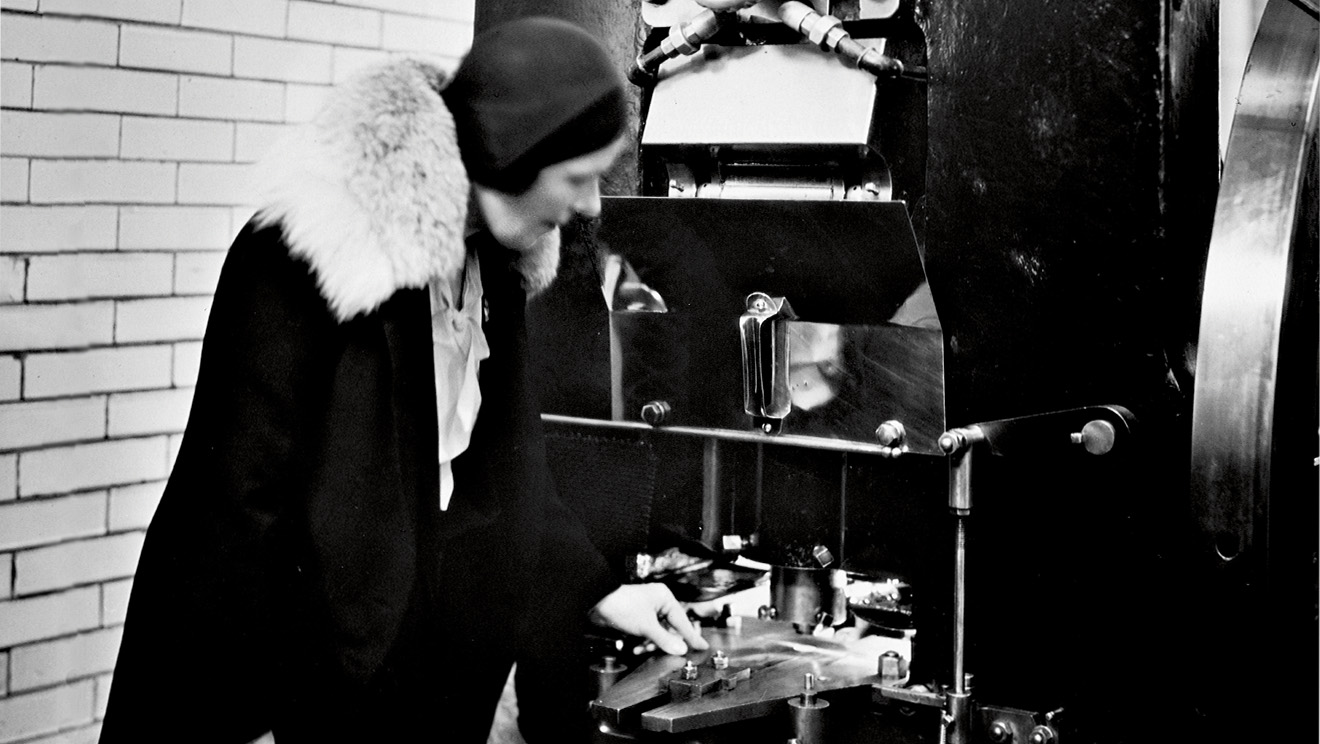
On the surface, the job seemed simple: announce the end of costly penny production in the federal budget; tell consumers and businesses how to round cash transactions to the nearest nickel; and empty cash registers and coin jars around the country to take them out of circulation. The first two steps were a breeze compared to what came next: physically removing at least 6 billion pennies in the first three years, depositing them at financial institutions (FIs) and trucking them from coast to coast to coast to recover their valuable copper and zinc.
Moving all those pennies meant shipping over 14 million kilograms via 1,200 tractor-trailer trips. Bank deposits surged to five times annual levels after the budget announcement and did not return to normal until late 2013. Over 3.5 billion pennies were returned in the first year alone. Working with that volume required close coordination with financial institution (FIs), armoured car companies (ACCs), our metal processor and the Department of Finance.
With enhanced reporting, usability and data capture, we can say the removal of the penny informed our approach to managing Canada’s coin distribution system. That proved to be worth its weight in gold when the pandemic hit.
Even under lockdown, our Canadian circulation team didn’t miss a beat, monitoring and forecasting coin demand from home and ensuring coins got to Canadians where and when they needed them. We even started conducting quarterly surveys on consumer attitudes to cash during the pandemic, and our findings continue to validate the relevance of cash for many Canadians and which demographics depend on it most.
Even as cash payment alternatives multiply, we can see coins and digital payments co-existing for the foreseeable future. We are ready to meet the future by ensuring that all Canadians who need coins can continue to use them thanks, in many ways, to the humble penny.
With fewer pennies available, finding one lying around just might prompt your inner collector to pick it up. The question is, will you keep it for good luck or use it in your next cash transaction? After all, the penny is still legal tender. Before you spend it, check with a reputable local coin dealer. Some of these coins have fetched a pretty penny:
- 1920s: most pennies from this decade are hard to find, but those from 1922-1926 are highly collectible.
- 1936: only a few ‘dot’ cents are known to exist, making them extremely rare.
- 1953-1955: two varieties of Elizabeth II laureate portrait exist: either with or without a “shoulder fold” on her gown. Depending on the year and variation, you might have a highly collectible coin.
- 2006: several variations exist for this year, but those with no “P” and no logo are very unique.
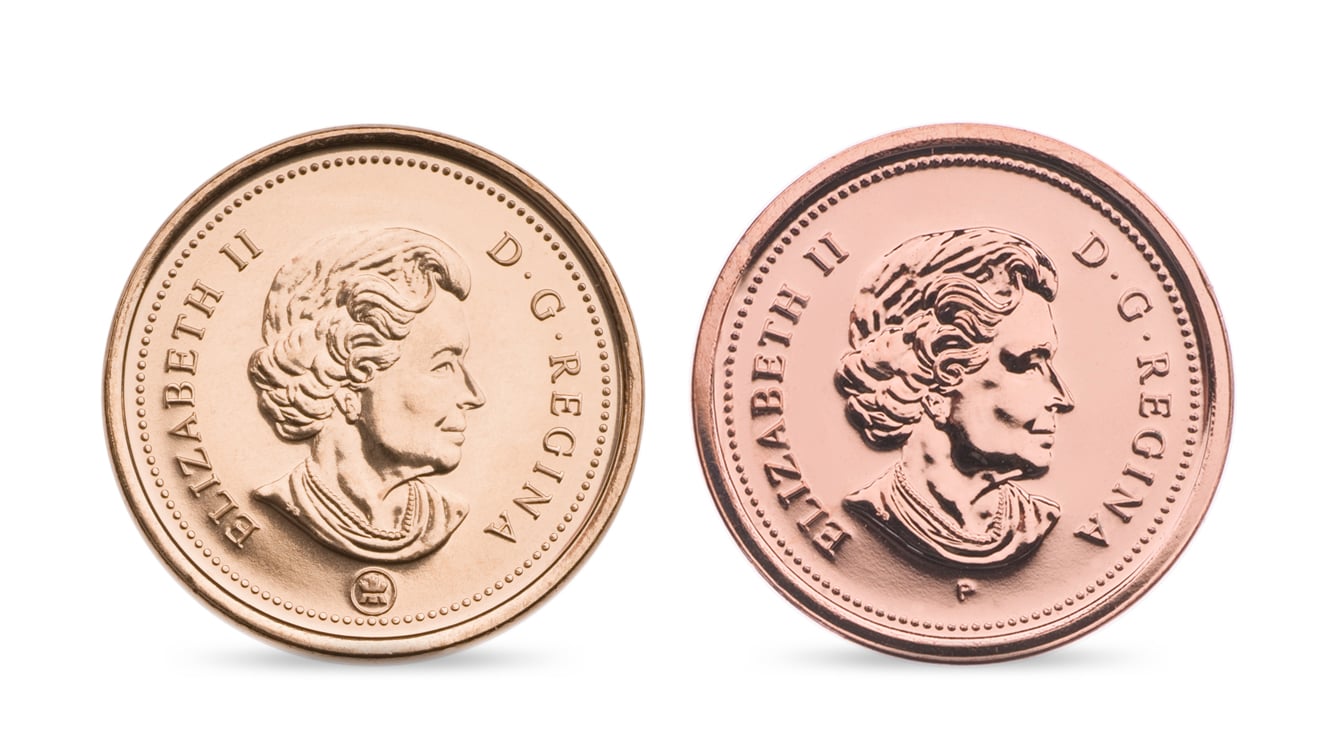
Take a trip down memory lane (scroll image gallery using arrows)


A Canvas for Canadian History: Discover Canada's 25-cent Coin
Of all the coins we find in our change, stashed in piggy banks or hidden under couch cushions, not one has shared as many stories as the 25-cent coin.
The quarter, as many Canadians call it today, began noting narratives long before it featured its first commemorative design in 1967 and decades before we struck our first coins in 1908.
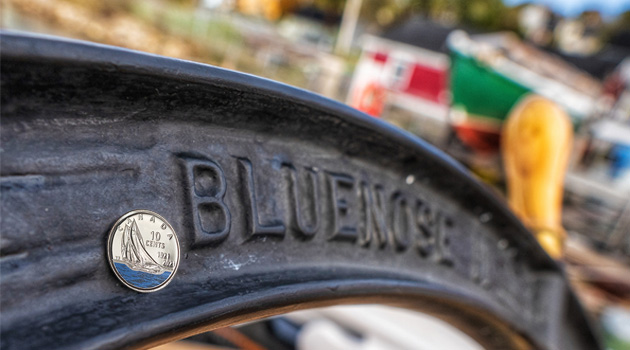

The Dime and its Colourful History
It might be small, but the history behind Canada’s 10-cent circulation coin featuring the beloved Bluenose is colourful. Sail back in time to discover the stories our dime has shared through its designs.
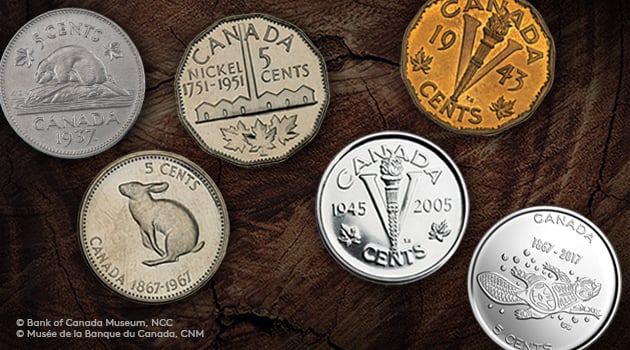

5 Stories Every Canadian Should Know: The History Behind the 5-cent Coin
From batteries and buildings to healthcare and hardware, nickel is one of the world’s most versatile and essential elements. Hundreds of thousands of products that we use daily are made of nickel, and coins are no exception! Discover the history of Canada’s 5-cent coin.




